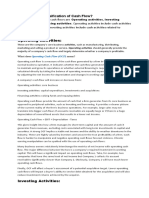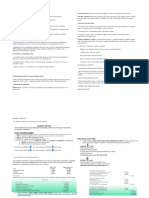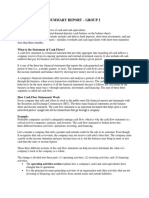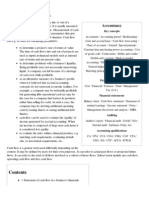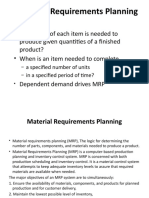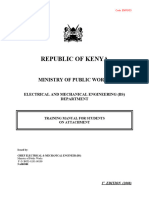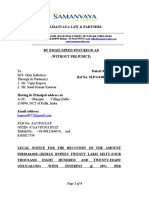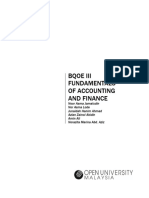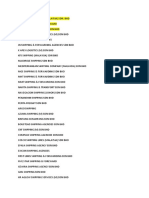INF GBUS Chapter 2 – Module 1 Kormann-Hainzl
Introduction to Cash Flow Analysis
What is Cash Flow?
Cash flow refers to the net amount of cash and cash equivalents moving in and out of
a business. It is a crucial metric for understanding the financial health of a company.
Cash flow can be categorized into three main types:
1. Operating Activities: Cash generated from the core business activities, such as
sales and day-to-day operations.
2. Investing Activities: Cash used for investments in equipment or assets, including
purchasing property or other capital expenditures.
3. Financing Activities: Cash related to funding, such as loans, repayments, or
investor contributions.
Importance of Cash Flow
Cash flow is often summarized with the phrase "Cash is King." Even if a business
appears profitable on paper, poor cash flow can lead to financial distress or even
bankruptcy. Analyzing cash flow helps ensure that a company has enough liquidity
to meet its obligations, pay its bills, and invest in future growth.
Positive vs. Negative Cash Flow
Positive Cash Flow: When more cash is coming in than going out, it allows the
company to grow, invest, and strengthen its financial position.
Negative Cash Flow: When more cash is leaving the company than coming in, it can
lead to cash shortages and difficulties in meeting obligations, threatening the
survival of the business.
Cash Flow Activities in Detail
Operating Activities: This includes the main revenue-generating activities of the
business. Examples are sales, payment of wages, and rent. A positive operating cash
flow indicates that the core business is generating enough cash to sustain itself.
Investing Activities: These activities often involve expenditures on long-term assets
such as machinery, technology, or property. A negative cash flow in investing
activities can indicate growth, as the company is investing in its future.
Financing Activities: This involves cash transactions related to funding the business,
such as taking out loans, repaying debts, or issuing shares to investors.
�INF GBUS Chapter 2 – Module 1 Kormann-Hainzl
Calculating Cash Flow
Activity Cash Inflows Cash Outflows Net Cash Flow
Operating $25,000 $15,000 $10,000
Activities
Investing $5,000 $4,000 $1,000
Activities
Financing $8,000 $3,000 $5,000
Activities
Total Cash Flow $38,000 $22,000 $16,000
1. Net Cash Flow from Operating Activities: Cash inflows from sales minus outflows
from operating expenses.
2. Net Cash Flow from Investing Activities: Cash spent on buying assets minus any
cash received from selling assets.
3. Net Cash Flow from Financing Activities: Cash received from loans or investors
minus repayments and interest payments.
Strategies for Improving Cash Flow
Increase Revenue: Focus on improving sales through marketing, offering new
services, or expanding customer relationships.
Reduce Costs: Evaluate expenditures to identify unnecessary spending or negotiate
better terms with suppliers.
Postpone Investments: Delay large purchases or capital expenditures until the cash
position is stable.
Conclusion
Monitoring cash flow is essential for the survival and success of any business. Even a
profitable company can face serious challenges if it lacks adequate cash to cover its
expenses. Understanding cash flow provides insight into a company's ability to
sustain operations, invest in growth, and navigate periods of financial uncertainty.
Main Source: Cash Flow Analysis: The Basics (investopedia.com)
